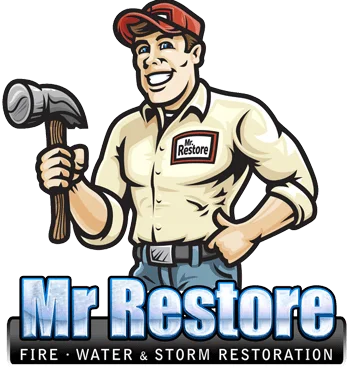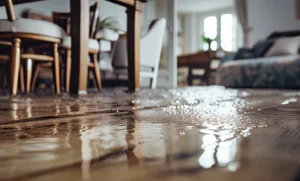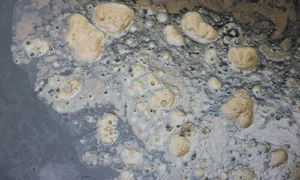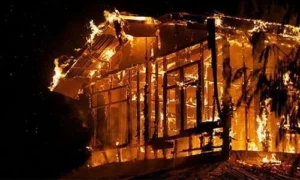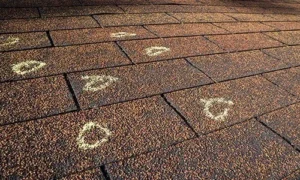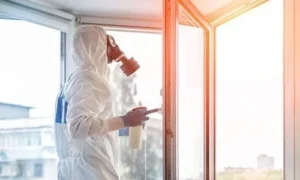Floods often catch homeowners off guard, leaving behind not only visible damage but also hidden dangers that can escalate if not addressed promptly. Did you know that even after standing water is removed, moisture can linger in walls, floors, and insulation, creating a ticking time bomb for structural issues and mold growth? These unseen risks are why understanding the flood cleanup process is so important—and why so many homeowners unknowingly make costly mistakes.
Professional flood damage cleanup company teams specialize in identifying and addressing these often-overlooked aspects of flood restoration. However, being informed as a homeowner can save you time, money, and stress during this challenging process.
The Hidden World of Moisture
Most people assume that once visible water is gone, the danger has passed. But water has a way of sneaking into areas you might never think to check—beneath floorboards, inside drywall, or deep in your home’s insulation.
Why This Matters:
- Mold Development: Mold thrives in damp, hidden spaces and can begin growing within 48 hours of water exposure.
- Weakened Structures: Prolonged moisture can rot wooden beams, degrade drywall, and warp floors.
- Long-Term Health Risks: Mold spores and bacteria in these hidden areas can impact indoor air quality and cause respiratory issues.
How Professionals Handle It:
Using advanced tools like thermal imaging cameras and moisture meters, professionals pinpoint hidden water pockets. These tools are far more effective than visual inspections, ensuring no moisture is left untreated.
The Danger of Contaminated Floodwater
Floodwater is rarely clean. Depending on the source, it may contain sewage, chemicals, and harmful bacteria. Homeowners often focus on salvaging their belongings, but contamination can render certain items unsafe, even if they look fine on the surface.
What to Watch For:
- Upholstered Furniture: Absorbs water and contaminants, making it almost impossible to sanitize.
- Carpets and Rugs: Even thorough cleaning may not remove all bacteria or odors.
- Drywall and Insulation: Porous materials soak up water, which can harbor pathogens and mold.
Professional Insight:
Experts assess the contamination level of floodwater before deciding which materials can be salvaged. Items beyond saving are removed and disposed of properly to prevent further hazards.
Cleaning Alone Won’t Solve the Problem
After a flood, many homeowners attempt to clean and sanitize surfaces using household cleaners. While this might remove visible grime, it won’t address deeper problems caused by floodwater.
Common Mistakes Include:
- Using Bleach: While bleach kills surface mold, it doesn’t penetrate porous materials or stop spores from spreading.
- Neglecting Airborne Contaminants: Floodwater can release harmful particles into the air, which cleaning alone won’t remove.
- Missing Hidden Areas: DIY cleaning often overlooks areas like HVAC systems, crawl spaces, or behind walls.
Why Professional Cleaning Works:
Restoration teams use antimicrobial treatments and HEPA air scrubbers to sanitize both surfaces and the air. This two-pronged approach eliminates bacteria, mold, and odors, ensuring a safe living environment.
Electrical Risks You Can’t Ignore
Floodwater and electricity are a dangerous combination. Yet, many homeowners don’t realize the extent of the risks lurking in their wiring and appliances after a flood.
Potential Hazards:
- Compromised Wiring: Water can corrode wiring, increasing the risk of electrical fires.
- Damaged Outlets: Flooded outlets can short-circuit or remain hazardous even after drying.
- Unsafe Appliances: Waterlogged appliances may seem functional but pose hidden risks of malfunction or fire.
How Pros Keep It Safe:
Professionals partner with licensed electricians to inspect and repair damaged wiring and appliances. Power is only restored once the home is deemed safe.
Air Quality: The Silent Threat
Floods don’t just damage your home—they can also pollute the air inside it. Mold spores, bacteria, and dust from debris often become airborne during the cleanup process, posing risks to anyone nearby.
Signs of Poor Air Quality:
- Musty odors that linger despite cleaning.
- Increased allergy symptoms or respiratory issues.
- Dusty or hazy air after restoration efforts begin.
Professional Solutions:
HEPA air scrubbers and dehumidifiers are essential tools for restoring indoor air quality. By filtering out harmful particles and reducing humidity, these devices create a healthier environment during and after cleanup.
The Risk of Mold You Can’t See
Mold isn’t always visible. It often hides in walls, ceilings, and other hard-to-reach places, silently spreading and causing damage over time. Ignoring or underestimating mold risks is one of the biggest mistakes homeowners make after a flood.
Why Mold Prevention is Critical:
- Fast Growth: Mold can start growing within 24-48 hours in damp conditions.
- Costly Damage: Left untreated, mold can require expensive repairs or even full material replacement.
- Health Concerns: Mold exposure can cause coughing, wheezing, and other respiratory problems.
The Pro Approach:
Flood damage restoration services include mold inspections, antimicrobial treatments, and moisture monitoring to eliminate spores before they can take hold.
Missing the Bigger Picture: Structural Integrity
When it comes to flood cleanup, many homeowners focus on cosmetic repairs—repainting walls, replacing flooring—without realizing that water damage can affect the core structure of their home.
Overlooked Structural Issues:
- Foundation Cracks: Water pressure during a flood can cause cracks or shifts in your home’s foundation.
- Rotting Beams: Wooden support beams can weaken over time if not thoroughly dried.
- Damaged Insulation: Waterlogged insulation loses its effectiveness and can harbor mold.
Professional Assessment:
Restoration experts conduct thorough inspections of your home’s structure, identifying hidden weaknesses and recommending appropriate repairs to ensure long-term stability.
Documentation: The Key to Insurance Claims
One of the most overlooked parts of flood cleanup is proper documentation. Without clear evidence of the damage, filing an insurance claim can become a frustrating ordeal.
Common Oversights:
- Insufficient Photos: Failing to capture the full extent of the damage, including hidden areas.
- Missing Receipts: Not keeping records of cleanup and repair expenses.
- Delayed Reporting: Waiting too long to notify your insurance company of the damage.
How Professionals Help:
A flood damage cleanup company provides detailed reports, including photographs, moisture readings, and itemized costs, making it easier for homeowners to file accurate and timely insurance claims.
Partnering with the Right Experts
Flood cleanup is a complex process that requires expertise, advanced tools, and attention to detail. Choosing the right professionals can make all the difference.
What to Look For:
- Experience with Flood Restoration: Look for companies with a proven track record in handling flood damage.
- Advanced Equipment: Ensure they use tools like thermal imaging cameras, HEPA air scrubbers, and industrial dehumidifiers.
- Comprehensive Services: The best teams handle everything from water removal to mold prevention and structural repairs.
- Positive Reviews: Check online testimonials or ask for references to gauge the company’s reliability.
Final Thoughts: Don’t Overlook the Details
Flood damage can turn your home upside down, but knowing what to expect—and what’s often overlooked—can make recovery smoother and more effective. Partnering with a professional flood damage cleanup company ensures that every detail is addressed, from hidden moisture to air quality and structural repairs.
In the end, it’s not just about cleaning up—it’s about restoring your home to a safe, livable condition while protecting your family’s health and peace of mind.
